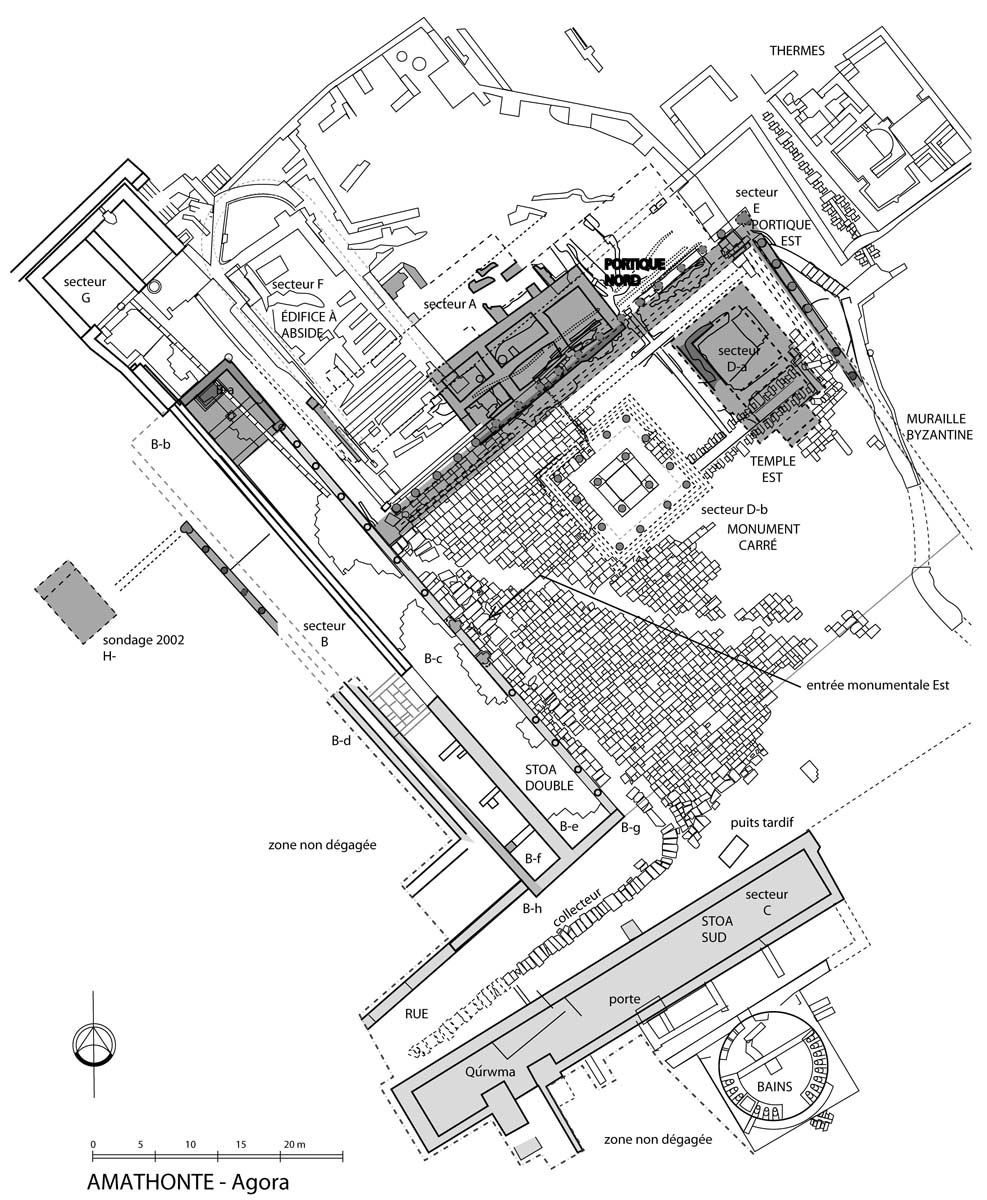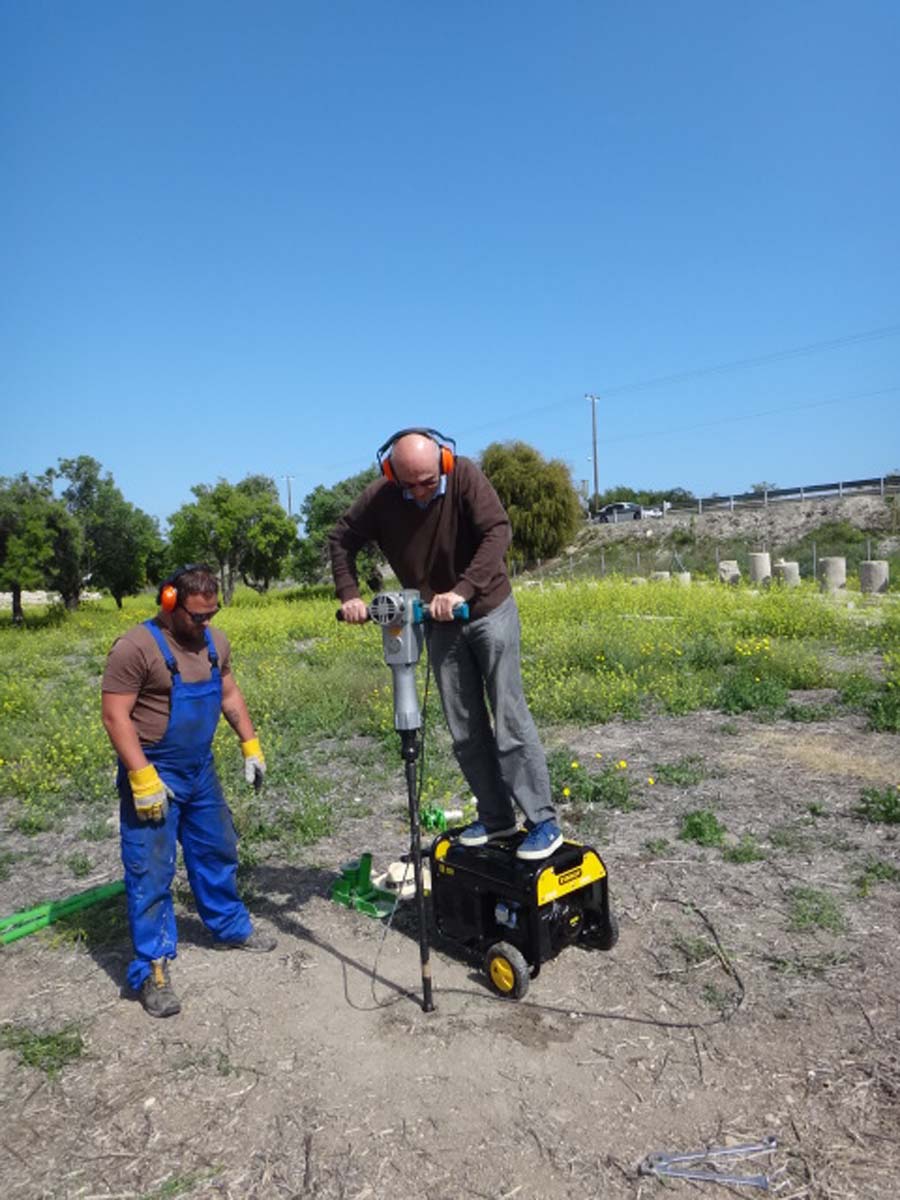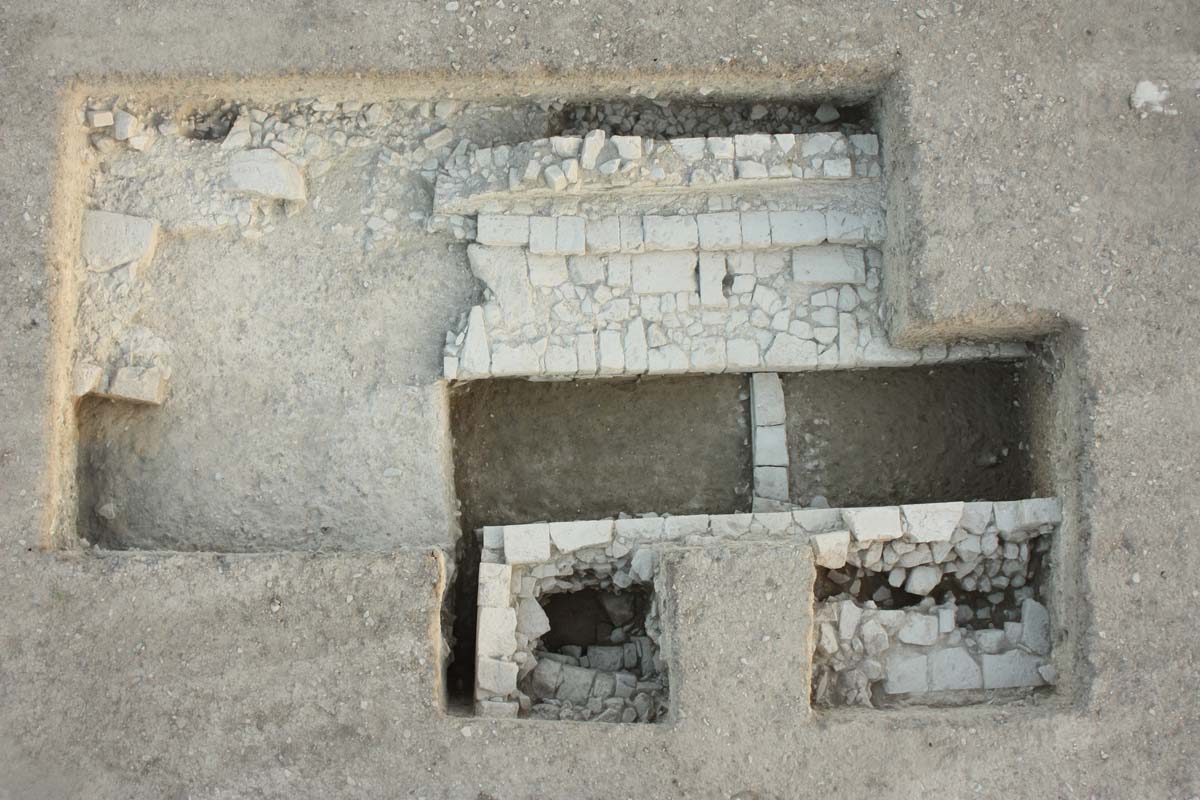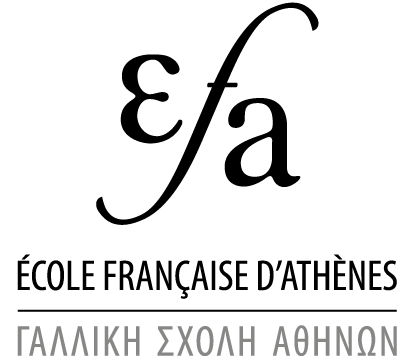Among the large-scale excavations that have taken place at Amathus since 1975, those of the lower city, in particular the agora, outlined the contours of a condensed architectural landscape, center of civic life that today offers itself to visitors as one of the most splendid public spaces on the island.

Ground plan of the agora (A. Kattos, T. Koželj, M. Wurch-Koželj / Archives EFA, 31188)
Work began under the direction of M. Loulloupis in 1977 and would continue without interruption until 1991. From the very first mission, a vast paved space with a surface area measuring nearly 1200 square meters was brought to light: the excavators found all number of architectural blocks, columns with smooth shafts and fluted torsos, Greek and Latin inscriptions as well as countless statue fragments.
The excavation extended first towards the east where late Roman thermae (thermal baths) were extracted, then northwards in the direction of the monumental fountain. Lastly, south of this area a circular- shaped balaneion was unearthed. A number of other buildings were discovered as well: a mysterious “rectangular building,” impressive porticoes to the west and south.
Jean-Paul Prête, then member of the French School at Athens, conducted further excavations between 2001 and 2003: they clarified points of chronology, mainly concerning the double stoa and the portico standing to the south.
The present condition of the agora as seen by visitors allows us to grasp the sprawling urban context of a Cypriot city, from the beginning of the Hellenistic period until the end of the Roman Empire. Nonetheless, there remain some unclear aspects that future studies will undoubtedly attempt to elucidate: where is the Amathus gymnasium located? Where exactly are the borders of the agora towards the south?

Core drilling expedition, 2014 (L. Thély)
New archaeological projects were recently entrusted to Ludovic Thély: following a campaign of geophysical prospecting and core drilling, an expedition led by Antoine Chabrol around the southwest area of the agora, between the built-up spaces of the lower city and the region presumed to be the inner harbour began in the summer of 2014. The aim is to establish the link between the agora and the outer harbour in order to better appreciate the boundaries of the constructions and to increase our knowledge of economic and harbour structures of the city during the Roman imperial period. The first mission yielded fruitful results giving a glimpse of the beginnings of a complex system of unloading goods that arrived by sea.

Roman structure, southwestern surrounds of the agora (L. Thély)
L. Thély
